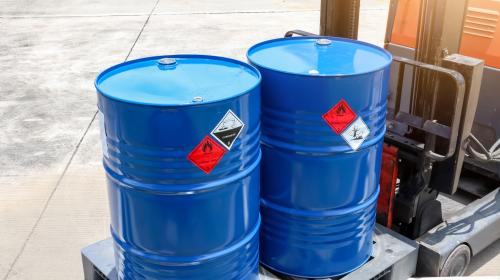Once you have determined that your company generates hazardous waste, it is time to determine what the Environmental Protection Agency (EPA) defines as your "generator status" or "enerator category." Your generator status depends on the amount of hazardous waste your company produces each month and must always be measured in pounds. Ultimately, your generator status affects how you should manage your hazardous waste to be in compliance with federal and or State regulations. It is up to you to know your company’s generator status and remain in compliance to avoid fines and other potential risks, as well as be in the best position to strategically manage your waste and keep your costs low. For guidance on the most cost-effective, environmentally-sustainable methods to transport, store and process your waste, consider working with the experts at Enviro-Safe Resource Recovery. We have a knowledgeable staff who can provide waste characterization, profiling and sampling. Unlike treatment, storage and disposal facilities (TSDFs) and waste brokers, we provide a variety of waste management solutions to help you reduce waste, resulting in more cost effective savings. We can help you determine your precise generator status, but the general guidelines from the EPA* are as follows.
Knowing Your Generator Category
- Very Small Quantity Generators (VSQGs) or Conditionally exempt small quantity generator (CESQG): You fall into this category if you generate less than 220 pounds (100 kg) of hazardous waste per month. How much acutely hazardous waste you generate and store determines how you should manage your waste. If your business complies with certain EPA requirements, you are exempt from hazardous waste management regulations.
- Small quantity generator (SQGs): If you generate between 220 and 2,200 lbs. (100 and 1,000 kg) per month, you fall into this category. The EPA lays out their storage, transportation and staffing requirements for small quantity generators on their website.
- Large quantity generator (LQGs): If you generate more than 2,200 pounds (1,000 kg) of hazardous waste, your company must comply with more rigorous EPA standards and requirements outlined here. Some of the biggest differences for a LQG is the amount of reporting required, training and providing a contingency plan.
Remember that your generator category is dependent on each month’s hazardous waste output and can vary from month to month. Additionally, you must convert any liquid hazardous waste product measurements from gallons to pounds. (For reference, roughly 30 gallons (approximately half of a 55-gallon drum) of waste equals around 220 pounds (100 kg)).
Identifying Your Hazardous Waste
Your hazardous waste alone is what determines your generator status; your non-hazardous waste does not impact your ranking. You must have an expert, either on your staff or the experts at Enviro-Safe, help you identify and measure your hazardous waste. The EPA provides a four-step process for identifying your company’s hazardous waste, and not doing so properly could put you at risk of incurring increasingly high fines and penalties under the Resource Conservation and Recovery Act (RCRA). The EPA states that companies should measure listed and characteristic waste that are:
- Accumulated on your company’s property for any period of time before disposal or recycling
- Packaged and transported away from your business
- Placed directly in a regulated treatment or disposal unit at your place of business
- Generated as still bottoms or sludges and removed from product storage tanks
Why Generator Status Matters: Shipping Restrictions
One of the large ways your generator status will impact your business is how often you’ll be required to ship waste from your facility:
- VSQGs or CESQGs: No limits or restrictions
- SQGs: 180 days or less without a permit, or 270 days or less when transporting over 200 miles
- LQGs: 90 days or less
Taxes, your staff’s labor and fines for failure to comply all increase when you jump in generator status. There are legal strategies your company can benefit from when you keep your generator status low, and the experts at Enviro-Safe can help. Contact us today and learn more about how we can help you minimize, identify and manage your hazardous waste.
*Keep in mind, some states have different generator categories than the EPA. Check to see whether your state has different generator categories. These are outlined on the EPA’s website here.



